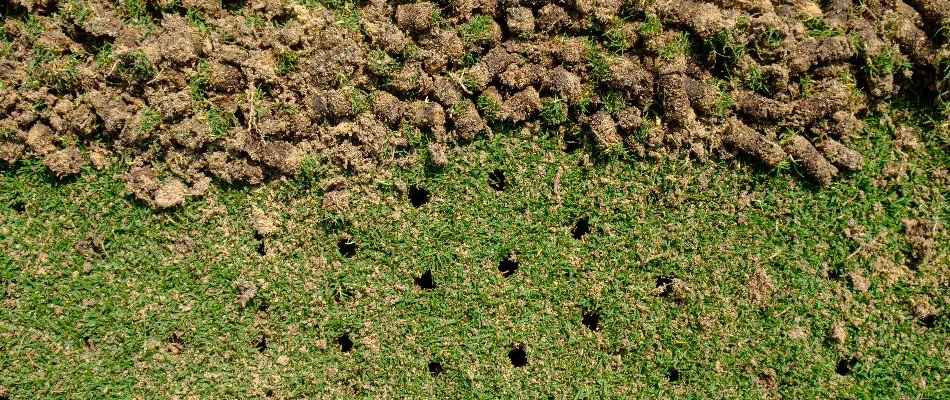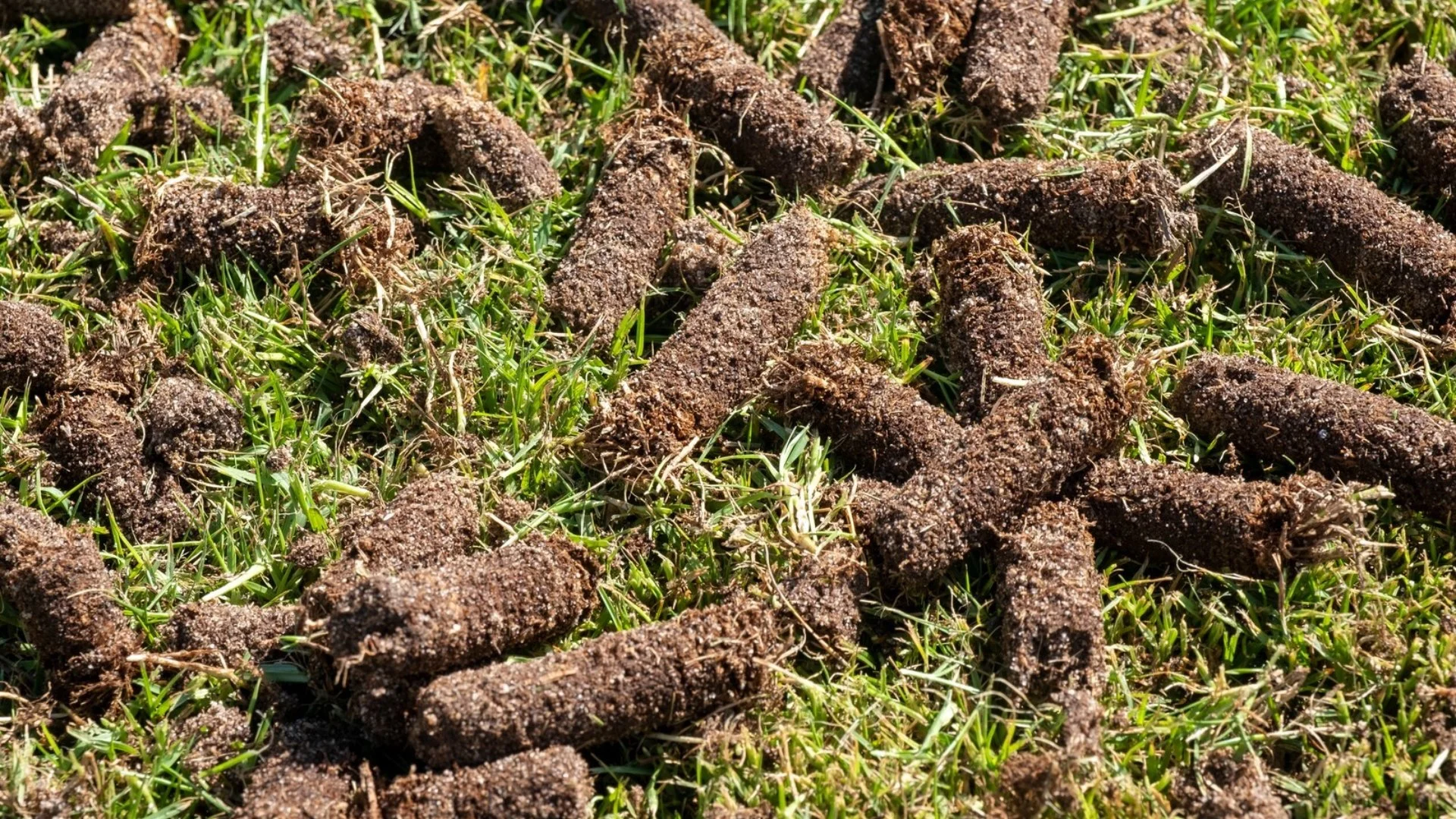Core aeration is a vital lawn care service that involves pulling up plugs of soil from your lawn to alleviate soil compaction and improve the flow of nutrients and other resources to the roots of your grass. This service is an essential part of your lawn care routine in Texas, offering vital benefits to your lawn's health while also featuring certain downsides. For example, while core aeration is highly effective at loosening compacted soil and breaking up the thatch layer, the process can be invasive to your lawn. Additionally, core aeration has to be performed at the right time to ensure it doesn't cause more harm than good. Finally, core aeration leaves behind soil cores, which some property owners find unappealing. However, these soil cores provide nutrients to your lawn as they decompose, and there are certain ways to deal with them to speed up the decomposition process.
What is core aeration?

Core aeration is a lawn care service that involves pulling up plugs of soil from your lawn. This process is designed to alleviate soil compaction by creating space in the soil and making it more porous to absorb vital resources. It also creates holes on the ground to improve the flow of nutrients and other resources to the roots of your grass. By doing so, it helps your lawn grow healthier and stronger. Loosening the soil also helps your lawn develop deeper roots, which are essential to surviving harsh, stressful conditions over the year.
What are the pros and cons of core aeration?
Core aeration is an essential part of your lawn care routine. By improving your lawn's nutrient uptake and bolstering its root system, it will be in better shape during the growing season. It also comes with certain pros and cons, which you should know about so you know how to deal with your lawn after aerating it.
-
Core aeration involves mechanically pulling up plugs of soil. It is done using an aerator machine that pulls up plugs of soil from your turf, which can be an invasive process for your lawn. However, the process will also help create passageways for nutrients and resources to reach the roots of your grass. It also helps break up the thatch layer to allow your grass to breathe and grow better. Fortunately, despite being an invasive process, your lawn will be able to recover from it depending on when the process is done.
-
Core aeration must be done at the right time. Because aeration can be invasive and stressful, it should be done when your lawn is at its strongest. Different types of grasses thrive during different seasons. For example, warm-season lawns should be aerated in the spring because they grow strongest during this time and will be able to endure the process.
-
Core aeration leaves behind soil cores. After aerating your lawn, the process creates hundreds of soil cores left on your turf which some property owners don't find very appealing. However, these soil cores provide nutrients to your lawn as they decompose. You can also break them up with a rake or go over them with a lawn mower to speed up the decomposition process. As they decompose, they will return nutrients to your lawn, which is a pro of core aeration.
Call Us Today to Schedule Our Core Aeration Service
At Weedex Lawn Care, we offer our core aeration service to help your lawn grow healthier and stronger. We will mechanically pull up plugs of soil from your lawn to alleviate soil compaction and improve the flow of nutrients and other resources to the roots of your grass. We offer this service to homeowners in Dallas, Fort Worth, Arlington, and other nearby areas in Texas. Call us today at (972) 727-9207 to schedule our core aeration service!



Comments (0)
Thanks for your comment!
Thanks for your feedback! Your comments have been successfully submitted! Please note, all comments require admin approval prior to display.
Error submitting comment!
There is a problem with your comment, please see below and try again.